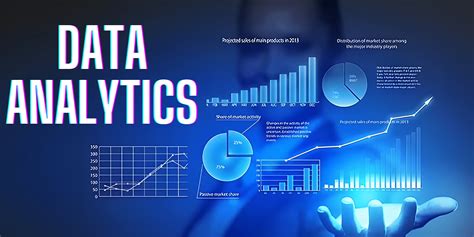In today’s rapidly evolving digital landscape, market analytics has emerged as an indispensable tool for businesses seeking to stay ahead of the curve and optimize their operations. By leveraging data from multiple sources and applying advanced analytical techniques, companies can gain invaluable insights into customer behavior, market trends, and competitive dynamics. This wealth of information empowers businesses to make informed decisions, adapt to changing conditions, and maximize their growth potential.

Key Benefits of Market Analytics
1. Enhanced Customer Understanding:
Market analytics provides deep insights into customer demographics, preferences, behavior, and loyalty. This information empowers businesses to tailor their products and services to specific customer segments, improve customer satisfaction, and build stronger relationships.
2. Informed Decision-Making:
By analyzing market data, businesses can identify opportunities, assess risks, and make informed decisions about product development, marketing strategies, and resource allocation. Data-driven decisions lead to better outcomes and minimize the potential for guesswork.
3. Competitive Advantage:
Market analytics enables businesses to track competitor activities, monitor market share, and identify potential threats and opportunities. Armed with this information, companies can develop strategies to stay ahead of the competition and maintain their market position.
4. Innovation and Growth:
By analyzing market trends and emerging technologies, businesses can identify innovative ideas for new products, services, and business models. Market analytics provides the insights needed to drive continuous innovation and expand into new markets.
Common Mistakes to Avoid in Market Analytics
1. Lack of Data Quality:
Ensure data is accurate, consistent, and complete to avoid skewed or misleading insights.
2. Limited Data Sources:
Consider integrating data from multiple sources, including customer surveys, social media, and CRM systems, for a comprehensive view of the market.
3. Biased Interpretation:
Avoid preconceived notions and approach data analysis objectively. Use unbiased techniques and multiple perspectives to draw accurate conclusions.
4. Overreliance on Historical Data:
Market conditions can change rapidly. Consider incorporating real-time data to stay abreast of emerging trends and make adjustments as needed.
Step-by-Step Approach to Market Analytics
1. Define Business Objectives:
Clearly define the goals you aim to achieve through market analytics. This will guide your data collection and analysis process.
2. Collect Relevant Data:
Gather data from multiple sources, including customer feedback, industry reports, market research, and publicly available data.
3. Clean and Prepare Data:
Remove duplicate or incomplete data, address inconsistencies, and transform data into a format suitable for analysis.
4. Analyze Data:
Use analytical techniques such as descriptive statistics, regression analysis, and segmentation to extract meaningful insights from the data.
5. Interpret and Visualize Results:
Present findings in clear and concise language, supported by visually appealing charts and graphs.
6. Make Data-Driven Decisions:
Integrate insights into decision-making processes to optimize operations, improve customer experiences, and drive growth.
Frequently Asked Questions (FAQs)
1. What types of data should I collect for market analytics?
Customer demographics, purchase history, customer feedback, industry trends, competitive analysis
2. What analytical tools are used in market analytics?
Descriptive statistics, regression analysis, segmentation analysis, customer relationship management (CRM) software
3. How often should I perform market analytics?
Regularly, at least quarterly or semi-annually, to stay abreast of changing market dynamics
4. How can I ensure the accuracy of my market analytics results?
Verify data sources, use multiple data perspectives, and conduct sensitivity analysis to assess the impact of data changes
Conclusion
Market analytics is a powerful tool that empowers businesses to make informed decisions, achieve their goals, and stay ahead of the competition. By leveraging data to understand customers, assess market trends, and identify opportunities, companies can unlock their full potential and drive sustainable growth.
Additional Resources
- The Ultimate Guide to Market Analytics
- 5 Common Mistakes to Avoid in Market Analytics
- Step-by-Step Approach to Successful Market Analytics
